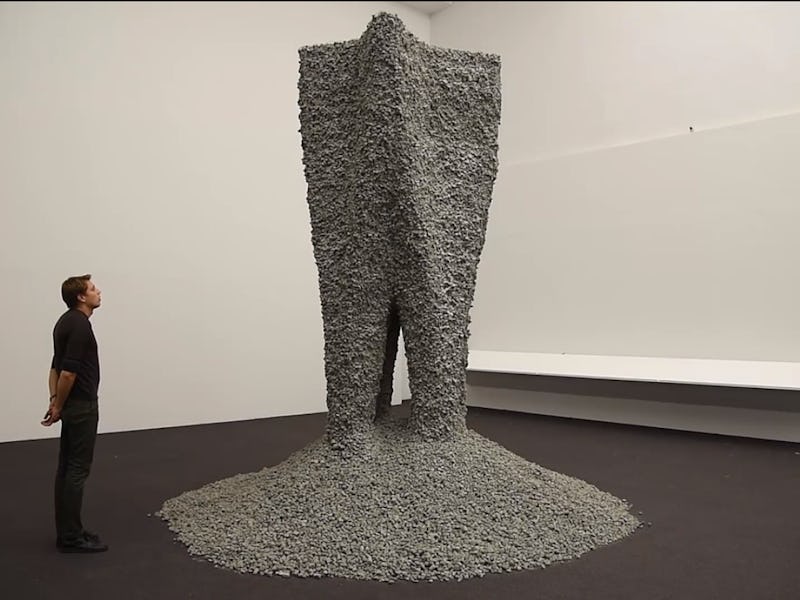MIT's 3D-Printed Sculpture Is Just a Pile of Rocks and String
The material is like concrete except fully reversible and reusable.

Check this: A 3D-printer lays down string in a looping pattern, and loose gravel is poured on top. This is repeated until a 13-foot tall column is filled with rocks and string. Pull away the supports and loose gravel and you’re left with a massive concrete-like sculpture that appears to give Isaac Newton the finger.
Despite appearances, the structure is insanely strong, project lead Andreas Thoma tells Inverse in an email.
“During our research leading up to the Rock Print installation we conducted various load tests on smaller prototypes,” Thoma writes. “One of the two-legged prototypes was able to withstand a 1.4 ton concrete block being placed on it without any issues. We then proceeded to repeatedly drop the block onto the structure until it finally, after 15 drops, collapsed.”
Rock Print is the result of a collaboration between MIT’s Self Assembly Lab and Gramazio Kohler Research. The architectural installation is on display at the Chicago Architecture Biennial.
Layers of string are laid down by machine between layers of gravel as the form grows upwards.
Knowing that the final sculpture is just a tower of loose rocks and string, you’d be forgiven for thinking it could crash to the ground at any second.
But the string acts as a binder for the rocks, resulting in a structure that, strangely, holds itself together. It works using a phenomenon called jamming, where loose materials packed together achieve a solid structure.
Jamming also helps explain why the rocks that are not bound by string don’t immediately crash down when the support structure is removed.
Why doesn't that loose gravel fall? It's jamming.
The team believes their technique could be used as an alternative, temporary concrete.
Like concrete, the base materials are cheap and available. Unlike concrete, when you no longer need the structure you can dismantle the rocks from the string. All of your materials are 100 percent recoverable and reusable.
“This is basic research but we envision that this building process could be used as a substitute for concrete in any structure,” says Thoma. “Currently the process is more geared towards compression structures, as is concrete, and could be used for constructing walls, columns or vaulted structures.
“By continuing research and development of the system, we believe that we could develop a material that would allow us to build load-bearing structures using local bulk materials. These structures could be rebuilt and reused with small or no costs, therefore changing the way we look at permanent and temporary architectural structures.”
Just, wow.